These Dragons Don't Breathe Fire
But they are spectacular creatures nonetheless
This is the season for these beautiful insects. Although we have dragonflies and damselflies year-round in Tucson, there are typically more of them around in the Tucson area during the summer. The combination of heat and summer rains provides ideal conditions for dragonflies and damselflies to thrive in.
The brightly colored Flame Skimmer is an easy dragonfly to see and identify, especially for people with limited knowledge like me! They can be found in any area with standing or slow-moving water. Like all dragonflies, the Flame Skimmer is great at pest control, eating mosquitos and small flying insects.
Green Darners are large dragonflies. Most often I see them flying and rarely landing or resting anywhere. Here you see a pair of Green Darners in a ‘tandem’ position. The male, with the blue abdomen, is holding on to the neck of the female Green Darner with special ‘claspers’ at the end of his abdomen while she is laying eggs in the water. The male is protecting the female from interference by other males in the area.
The mission of the Sonoran Institute in Tucson is to “connect people and communities with the natural resources that nourish and sustain them.” Every year in September they host a Dragonfly Festival along parts of the Santa Cruz River. I took part in one of their outings at the Heritage River Park in Marana. One of the leaders, a UA student, had caught several dragonfly nymphs in the river for us to observe. Dragonflies spend most of their lives underwater as larvae (nymphs) and emerge as adults in the spring and summer.
Depending on the species, dragonfly and damselfly nymphs may spend anywhere from a few months to a few years in the water before emerging from the water as an adult. Below is a Rambur’s Forktail Damselfly. Note how a damselfly’s body is slimmer than a dragonfly’s.
By having experts in the field at the Dragonfly Festival, we learned how to capture these insects with a long-handled net. Dragonflies and damselflies can be safely handled by their wings. This is an American Rubyspot damselfly. Look at that bright ruby-red spot at the base of its wings!!
Powdered Dancer damselflies are seen throughout the US. A decade or so ago they were not present in our area. Since the Santa Cruz River has become a strong, flowing river north of Tucson, it created a habitat that these damselflies need so they have become common there. You can see the typical damselfly eyes that are separated to the side of their thin heads.
Here is another shot of the same female Powdered Dancer. I like this image because of the shadow on the ground of the damselfly and its twig perch.
Here is a pair of Powdered Dancers. The male, with a pruinose (chalky) thorax is in front of the female with the more glossy blue thorax. The thorax in a damselfly or dragonfly is the boxy central part of the body, between the head and the long abdomen. The thorax is large due to the muscles needed to power these insects in flight. The wings and feet of the insects attach to the thorax.
The Wandering Glider is another insect with an incredible lifestyle. They are found on every continent other than Antarctica. They are long distance migrants. Unlike other dragonfly species that have specific habitats, Wandering Gliders follow wind and weather patterns to find rainstorms. They then lay their eggs in the puddles formed by rainstorms. Those puddles do not have fish which could dine on dragonfly larvae and the larvae have to develop very quickly before the puddles dry out!
Here is another pretty blue damselfly, the Familiar Bluet.
Mexican Amberwings are among the smallest dragonflies in the US. They are residents in the Sonoran Desert and not found in other parts of the US.
Widow Skimmers may have been named because the males leave the females alone to lay their eggs unlike most other dragonfly species. The males’ wings have a dark patch bordered in white which reminds me of a mourning cloak. In either case, this is a good looking dragonfly species as we see from the female below.
Dragonflies are really remarkable insects. To learn a bit more about them, watch this short PBS special or read about them in the Smithsonian magazine.


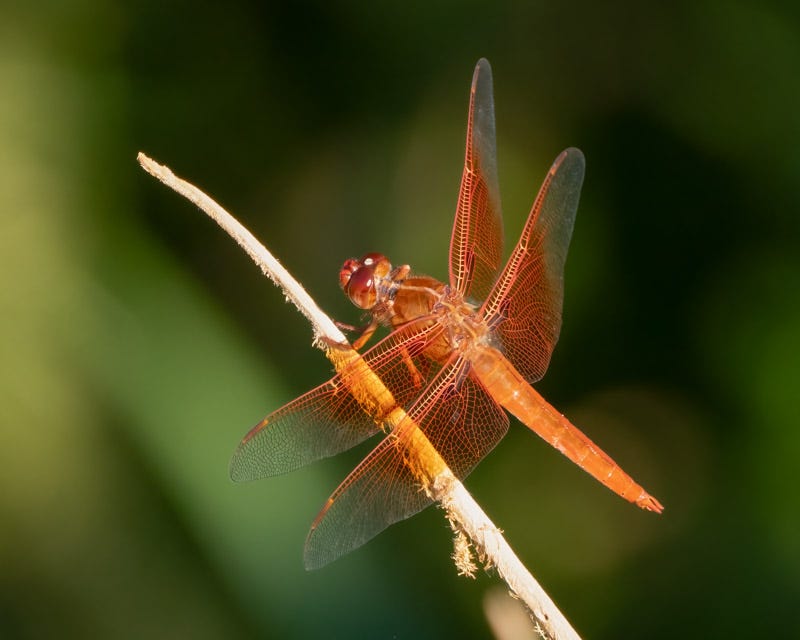
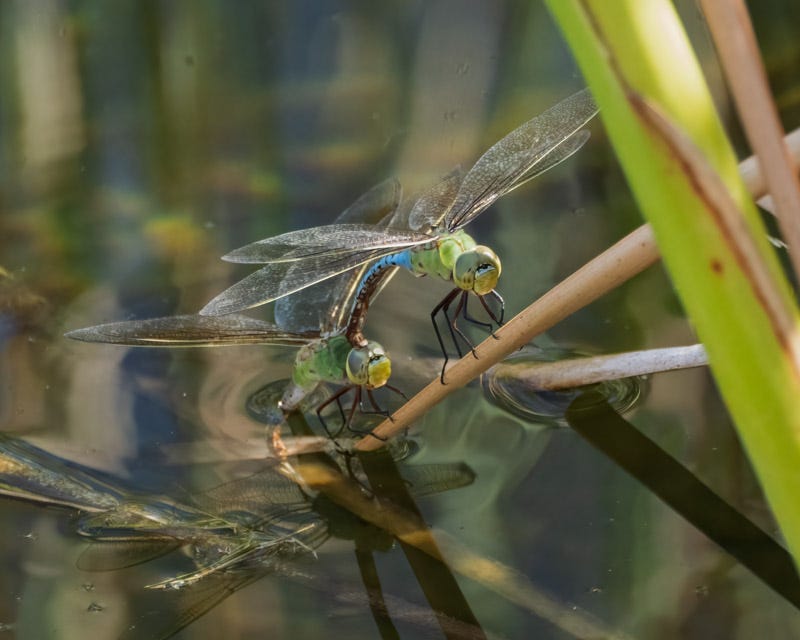
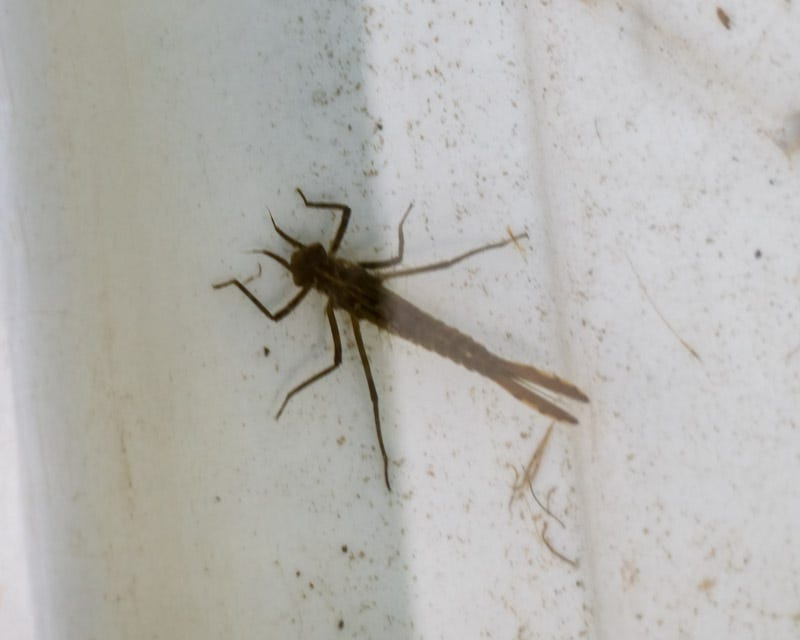

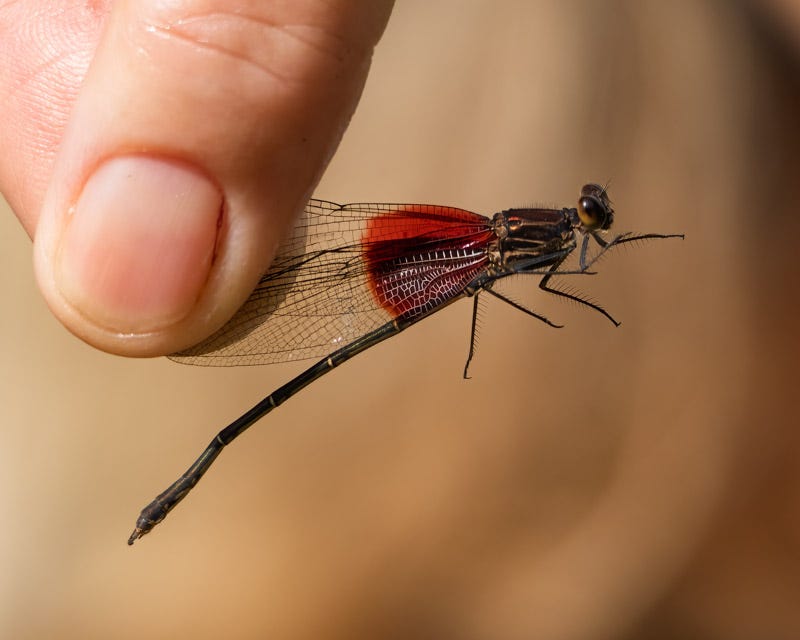
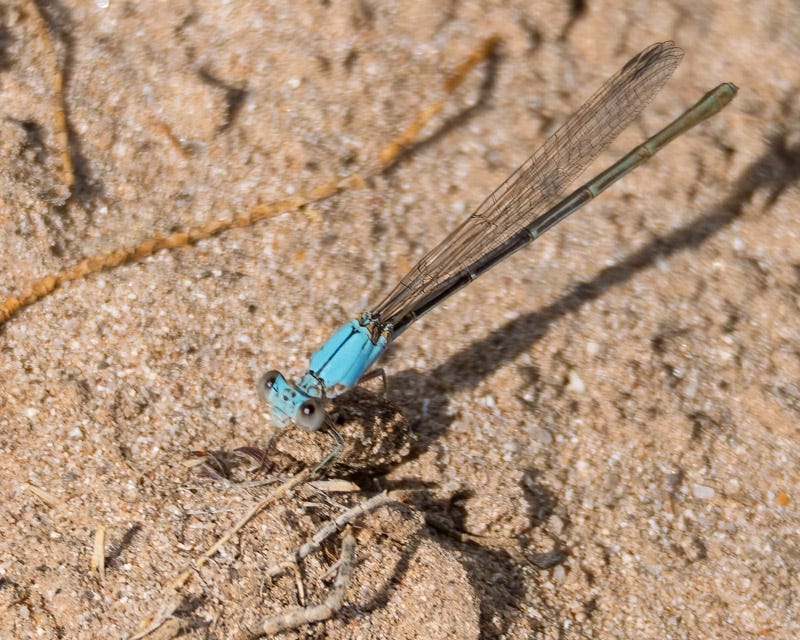
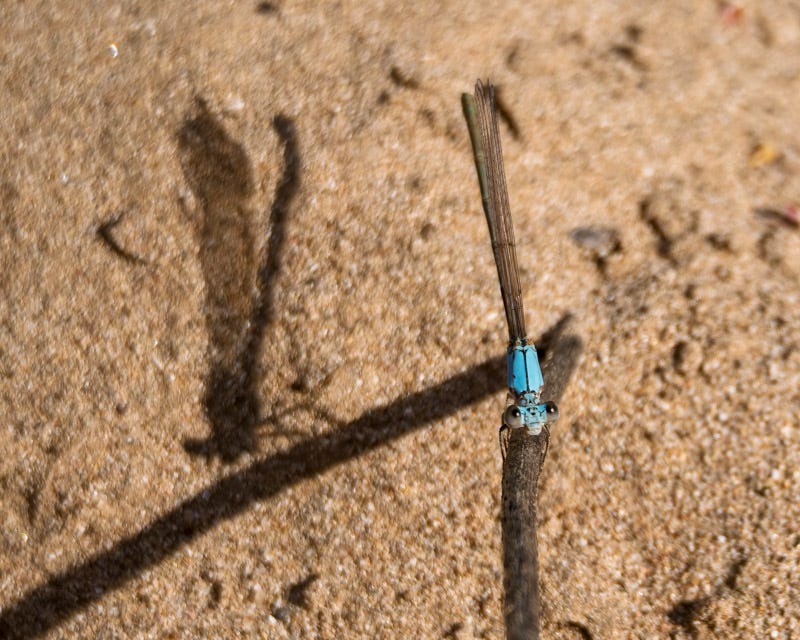
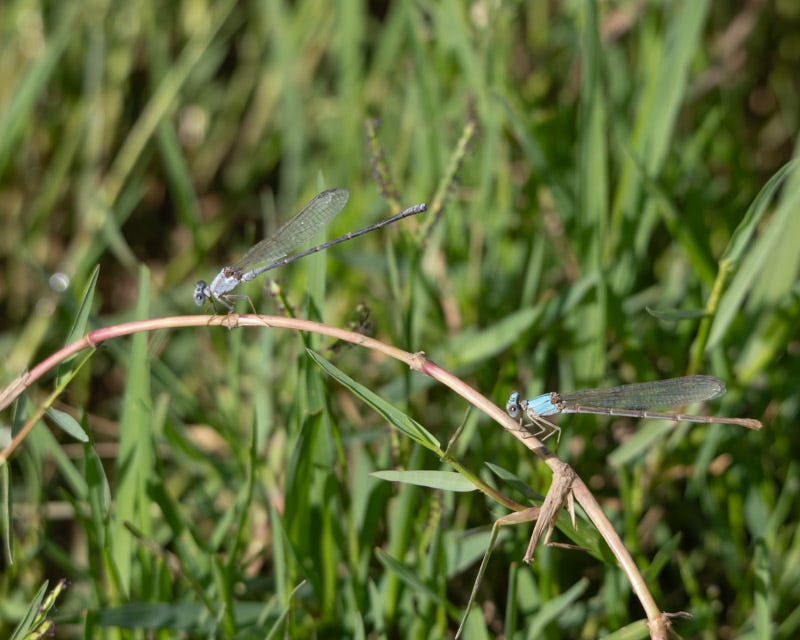


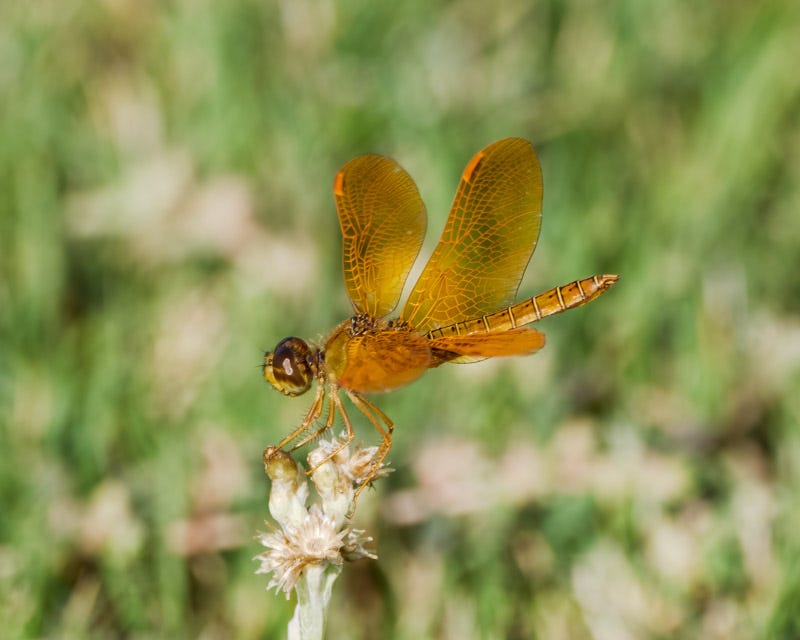
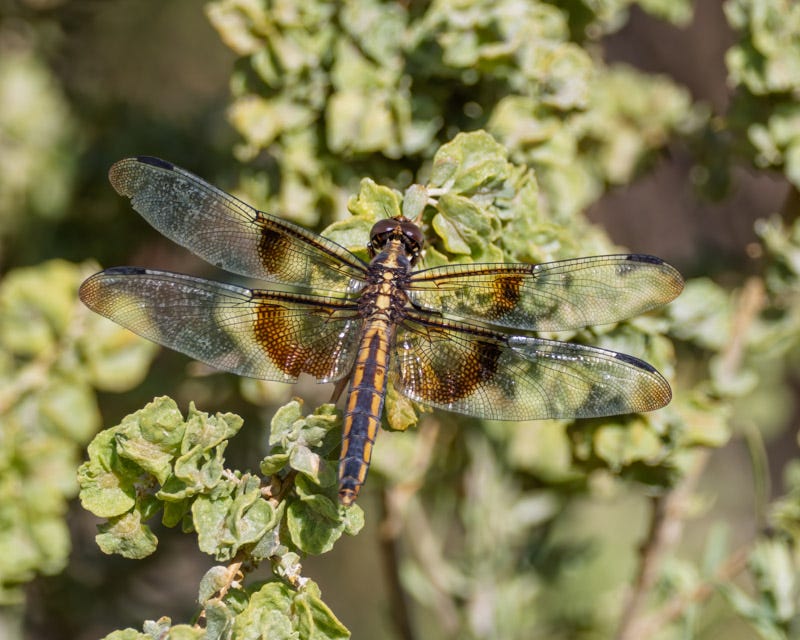
Wonderful photos and great information!
Hello Dan, you share some interesting things!, I’ve been on Substack for about 2 weeks and trying to meet new people.
I thought I’d drop a comment and introduce myself with a article:
https://open.substack.com/pub/jordannuttall/p/giants-in-history?r=4f55i2&utm_medium=ios